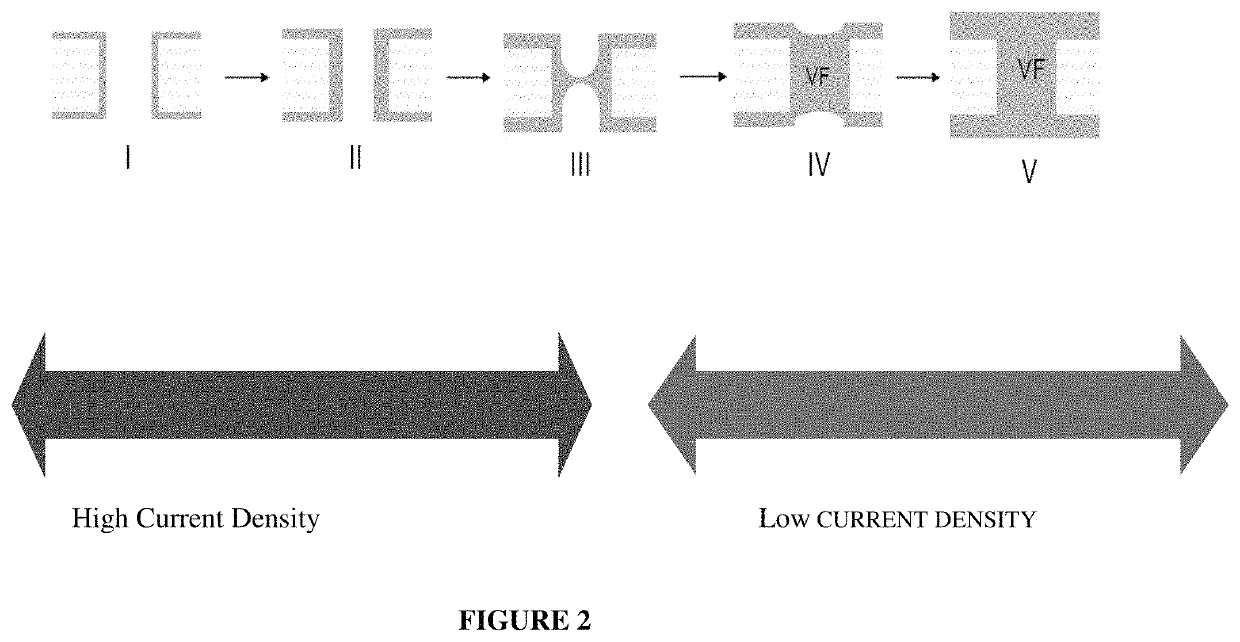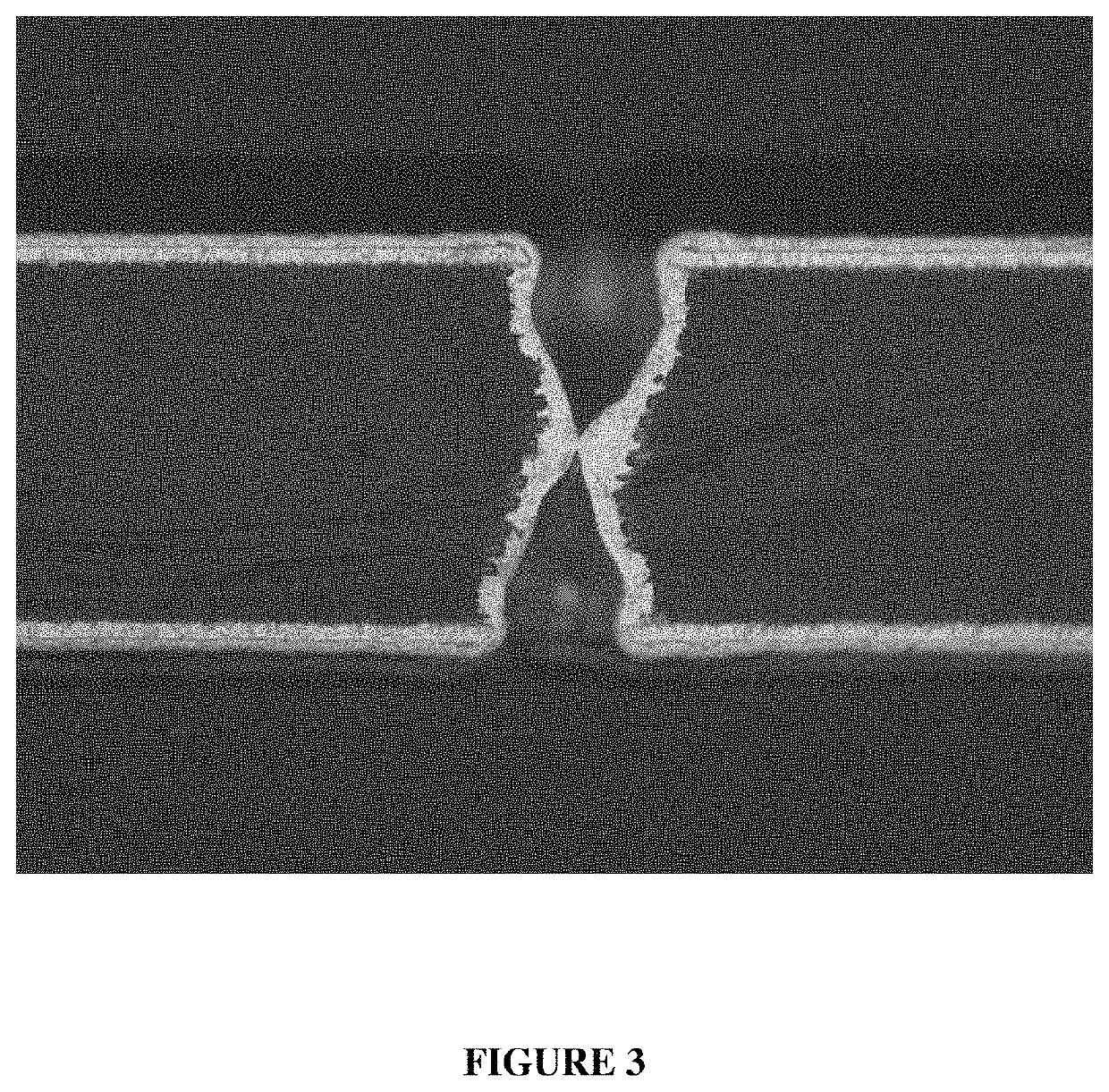Method of filling through-holes to reduce voids and other defects
a technology of through-holes and defects, applied in the direction of liquid/solution decomposition chemical coatings, printed element electric connection formation, coatings, etc., can solve the problems of copper plating's increased difficulty in filling through-holes, and increased difficulty in reducing through-holes. , to achieve the effect of reducing or inhibiting dimple formation and voids, good through-hole filling, and improving throwing power
- Summary
- Abstract
- Description
- Claims
- Application Information
AI Technical Summary
Benefits of technology
Problems solved by technology
Method used
Image
Examples
example 1
[0041]An FR4 / glass-epoxy coupon 5 cm wide, 15 cm long and 200 μm thick with a plurality of through-holes was provided by Tech Circuit. The through-holes had an average diameter of 100 μm. The coupon was plated with CIRCUPOSIT™ 880 Electroless Process plating formulation and method (available from Dow Electronic Materials, Marlborough, Mass.) to form a copper layer on one side of the coupon and on the walls of the through-holes. The thickness of the copper layer on the coupon was 0.3 μm. The coupon was pre-cleaned using a conventional copper cleaner. The coupon was then placed in a Haring cell which contained a copper electroplating bath with a formula as shown in the Table.
[0042]
TABLECOMPONENTAMOUNTCopper sulfate pentahydrate220g / LSulfuric acid40g / LChloride ion from hydrochloric acid50ppmPolyethylene glycol2g / L4-phenylimidazole / imidazole / 1,4-butandiol50mg / Ldiglycidyl ether copolymerBis-sodium sulfopropyl)-disulfide10mg / L
[0043]The coupon was connected to a conventional DC rectifier. ...
PUM
| Property | Measurement | Unit |
|---|---|---|
| diameters | aaaaa | aaaaa |
| diameters | aaaaa | aaaaa |
| thick | aaaaa | aaaaa |
Abstract
Description
Claims
Application Information
 Login to View More
Login to View More - R&D
- Intellectual Property
- Life Sciences
- Materials
- Tech Scout
- Unparalleled Data Quality
- Higher Quality Content
- 60% Fewer Hallucinations
Browse by: Latest US Patents, China's latest patents, Technical Efficacy Thesaurus, Application Domain, Technology Topic, Popular Technical Reports.
© 2025 PatSnap. All rights reserved.Legal|Privacy policy|Modern Slavery Act Transparency Statement|Sitemap|About US| Contact US: help@patsnap.com



